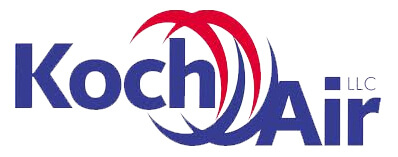Whether it is for comfort heat or process power, your steam boiler is an essential piece of equipment for your operation. A steam boiler failure can lead to serious problems, from safety issues to expensive downtime and loss of profits. Knowing when to replace your steam boiler can keep you from being caught in an emergency situation.
Understanding the most common causes of steam boiler failure will help you spot the signs that your steam boiler may need to be replaced. Operator error is the most common cause of steam boiler failure. A variety of user errors can result in premature failure or poor performance. Being aware of these issues will certainly help you to extend the life of your steam boiler. The normal life expectancy of a steam boiler is 20 to 30 years given proper care and maintenance routines are applied.
When considering steam boiler replacement, the three most important aspects to think about are Safety, Economics, and Requirement Changes.
1. Safety
Safety problems are often discovered during scheduled safety inspections during which time state licensed inspectors to examine the condition of the pressure vessel and boiler safety devices. In addition to the annual inspections, boiler operation should be closely monitored. Conditions to watch for:
- High stack temperatures – Unusually high stack temperatures indicate poor heat transfer and potentially unsafe conditions due to poor combustion, poor water management, or low water levels.
- Excessive cycling – Continuous starts and stops increase the number of “thermal cycles” to which the pressure vessel is subjected. Excessive thermal cycling and associated stress can cause fatigue in boiler steel.
- Irregular stopping/starting – Irregular stopping and starting may be an indication that the operating controls are not functioning properly and the safety controls have taken over. All operating and safety devices and their settings should be inspected by a qualified technician.
- Poor combustion tuning/rumbling – Improper fuel and air flow can cause noticeable surging and pulsations. Possible causes are improper burner adjustment, combustion fan issues, and improper stack design or conditions.
BOILER SAFETY TIPS:
- Consider marking normal stack operating temperature directly on the face of the gauge.
- Consider installing a high stack temperature cut-out or alarm.
We recommend and provide our customers with an operator’s log that they can keep and review regularly to identify unusual trends or areas of concern.
Steam boiler safety problems can manifest as either water side or combustion side issues. Issues on the steam side are most often caused by poor water management. These typically include:
- Water hardness – Internal scale develops on tubes because of a failed water softener or improper softener settings. This layer of scale impedes heat transfer and can cause dangerous overheating, which may be observed as high stacked temperature.
- Poor oxygen removal – When deaerator and or the water treatment system do not function oxygen pitting on the Surface of the tubes may result.
- Poor water chemistry control – Can lead to “caustic embrittlement” which causes tubes to lose key mechanical properties.
- ”Quenching” – Inadequate water circulation within the boiler may lead to overheating in certain areas of the boiler. When overheated steel is quickly cooled or quenched, a crack may develop causing tube failure.
Combustion side safety problems are typically the result of poor tuning or fuel/air issues related to maintenance. These may include:
- Improper tuning – Can lead to incomplete combustion and carbon deposits on internal surfaces.
- Out-of-date controls or worn out linkages – can lead to poor fuel and air control.
- Unreliable operating controls and safety devices – Might include flame scanners, pressure and temperature switches, safety relief valves, etc.
2. Economics
Steam boiler inefficiencies can be a good reason to consider boiler replacement. Fuel cost is a major factor. The cost of inefficiency increases as operating hours and fuel costs go up. Even a slight improvement in efficiency may result in substantial savings.
Another economic consideration comes into play when a steam boiler is in need of repair. In some cases, the cost of repair may be high enough that replacement is actually a better financial decision. If parts are obsolete or service is hard to schedule, the impact of downtime will certainly increase the overall cost of repair.
If the total cost of steam plant downtime is very expensive, consider installing a backup boiler to improve the overall reliability.
3. Requirement Changes
It is not unusual for plant steam requirements to change over time. An oversized boiler continuously operating in its low range is typically far less efficient than a unit which is properly sized for the load. Investment in a properly sized steam boiler can lead to substantial fuel savings and better overall performance. More efficient models, smaller capacity models, or even two smaller steam boilers might operate more efficiently, depending on the situation. A knowledgeable boiler supplier can help you make these determinations.
When making the decision about whether or not to replace a steam boiler, all of these aspects should be considered. Current plant loads, future plant loads, and new technology should all be considered in the repair or replace decision. A steam boiler that is unsafe should be of the utmost concern and made an absolute priority.
Do you have concerns about a steam boiler used in your operation? Our team is highly experienced and available to assist you in considering your options. Contact us today.
Questions? Your Lathrop Trotter sales engineer can help! Contact Us





